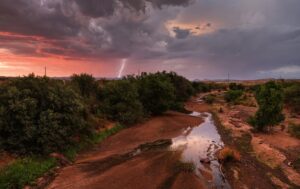
Photo Credit: Pixabay
TIHUANACU, Bolivia, Nov 25 (Reuters) – High in the mountains of the Bolivian Andes, farmer Alberto Quispe has one thing on his mind: rain. In the rural area of Tihuanacu, around 100 kilometers (62 miles) south-west of highland city La Paz, locals say there has been little rain this season during a dry spell across the Andean regions due to a third straight La Nina weather pattern.
“When we raise our hands, we ask God to forgive us our sins and to ask for rain for our crops, because in the fields we don’t have water, nor for the cattle,” said Quispe, who climbed into the hills with community members to pray for rain.
Around Bolivia, many areas have declared an emergency due to the drought, which Bolivia’s National Meteorology and Hydrology Service expects will last until 2023, when the intensity of the La Nina is expected to wane. The drought has hit crops in Bolivia as well as in Argentina, Paraguay and Peru. Quispe and others climbed Lloco Iloco hill with their evangelical shepherd to ask for rain from both God and the local indigenous








